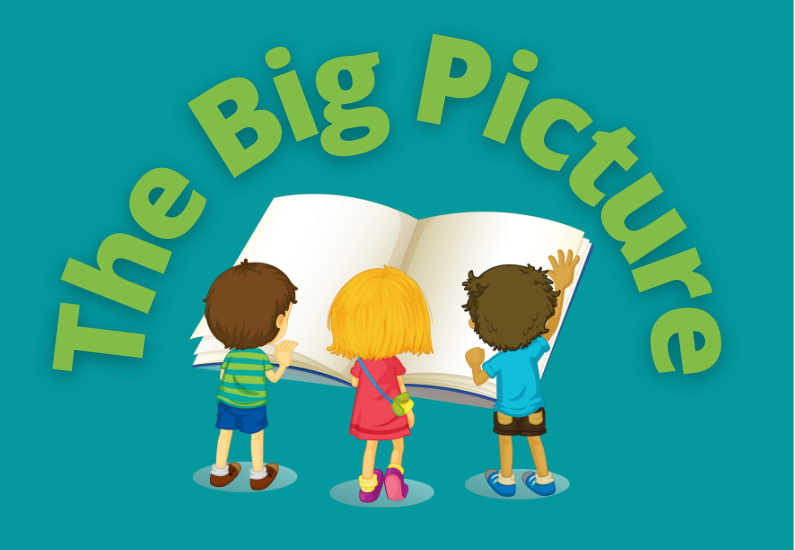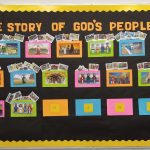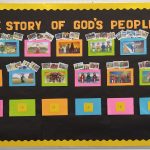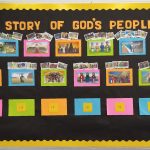So you’ve been asked to teach a Bible class. Or maybe you haven’t been asked but you volunteered. Or maybe you haven’t been asked or volunteered but it seems that you are expected to teach a Bible class. Whichever the circumstance, it is a wonderfully, awesome and sometimes overwhelming task.
I don’t need to mention it here but I will. Teaching Bible class can be time consuming and frustrating. Putting hours of preparation into a class only to have children miss due to parental neglect or to have children arrive tired and irritable makes it seem like a losing battle.
Teaching Bible class can also be so very rewarding. What an opportunity! What a privilege! Being given a few minutes each week to help children learn more about God. You never know who is going to walk through your door who may have never heard about Jesus before. Check this post I wrote awhile back about a gift in the form of a little girl who walked through my classroom door one night.
There are a few things that can be done to help ease the burden of teaching Bible class. I think, that if more teachers would follow the preparation steps I have come up with, there would be less burn out and there would be more teacher retention.
The problem:
When I started teaching, I was handed a quarterly teacher’s manual. I dutifully taught each lesson as it came up. Each week I turned the page of the teacher’s manual to the next lesson, never looking ahead, just teaching each lesson as it appeared in the teacher’s manual. Each week it was like I was starting over. There was no continuity. Each lesson was an island unto itself. I was failing to see the big picture. Part of the reason was that I was young and didn’t have as good a grasp of the big picture myself so I taught class like I had perceived Bible class to have been taught when I was young. One lesson, then the next, then the next, never really making the connection that each of these people and events were parts of the big picture. When I changed the way I looked at the teacher’s manual, I changed the way I taught.
The Bible, while it is composed of many different books, is one big story. One big. beautiful, true story of love and redemption, sin and salvation. That’s what we need to teach our students. They need to begin to understand the whole story is a compilation of biographies of people God wanted us to know. They need to know that through these people, their actions, their emotions, their reaction to God, we can learn who God is and what He wants from us. This is no small task but with a little different way of approaching our Bible class, it is doable.
The Solution:
It should be, and I assume is, understood that a teacher of the Bible needs to be a student of the Bible. Personal study should be an ongoing activity whether or not you are teaching in a classroom. Not just enough study to get by but daily study, meditation and prayer.
Take A Good Look At Your Curriculum.
Whether you are using a purchased curriculum or you are creating your own, there should be a plan. A teacher needs to look at the entire curriculum before settling into the particular teacher’s manual you are teaching. Each teacher needs to know where her quarter fits into the overall plan. She needs to know what the students have already studied so she can bring in review as appropriate and she needs to know what the students will be learning after her quarter is over so she can prepare her students where possible.
The easiest way to do this is to look online at the curriculum’s publishing company’s website. They should have a good description of their product and by looking at the titles of each of the quarter’s books, you should be able to get a feeling for how the curriculum will flow from one quarter to the next. This is especially an important step for a teacher who only has the opportunity to teach once a year or so. If this teacher just focuses on the one quarter in her hand, her lessons will be disconnected from the rest of the program. So get online (or if you have the actual books in your resource room, look there) and see how the publisher or writer of the curriculum you are using has organized the entire program.
Once you have looked at the entire program, take a look at your specific teacher’s manual. Look at the Table of Contents and then read the manual. Read the whole thing. Hopefully you’ve been given several weeks if not an entire quarter ahead to do this. If not, it can still be done, just not as leisurely as it would be if you had an entire quarter.
Think about how you will present the lesson.
As you are reading the teacher’s manual, be thinking of how you would like to present the lessons. While change can be good, I like to present the lessons within a quarter in basically the same way. Change it up from quarter to quarter but keep things consistent within a quarter. For instance, use Betty Lukens’ felts for every or most lessons in the quarter. Or I might choose to use the Abeka cards for the main visual aid. Making a choice on what visual aid I will be using most often brings continuity to the lessons and alleviates me having to come up with something new every week. If I wait to make this decision week by week, I probably will end up with nothing. If I decide to use something different every week, it will require me to be creative every week. It’s that “be creative every week” thing that causes so many teachers to burn out and hesitate from teaching again.
Decide what learning activities you will use.
If there are student workbooks, how will you use them, if at all. This decision, like the one above, is easier if it is made early on. Take into consideration who the students are, what their strengths and weaknesses are, etc. Do they like to fill out workbooks? Do they like to get out of their seats and release some energy? Do they have support from home that will allow for a little home work?
If you choose to use the student workbook as it is written, much of the work is done for you but doing the same thing quarter after quarter can get monotonous for students and teachers. Changing a matching activity in the workbook to a white board activity can be a nice diversion. Just write the activity on the board and let the students take turns completing it. Many of the workbook activities can be easily changed into games or interactive bulletin board activities with just a little extra effort.
I like to have a quarter long or monthly project. The younger students do well with a monthly project that ties several lessons together. These pop-up books are good for this although, I have to admit, they are not the easiest things to come up with. The older students benefit from a quarter long project that will allow them to review each week’s lessons as they work through the project and allow them to take something home that they can keep. I have used project folders to tie a quarter’s worth of lessons together. A notebook can work just as well.
Whatever you choose to do, make sure that the activity fits the lesson. If the activity itself is complicated or too difficult, the children will be concentrating on how to do the activity instead of getting the benefit of the activity reinforcing the lesson. If you would like to do a more complicated activity, do it repeatedly for several weeks. This will allow the children to begin doing it with ease and concentrate on the lesson at hand.
The other stuff
Spend some time in your classroom deciding what bulletin board changes should be made. Make sure there is a good timeline and appropriate maps on the wall. Decide how the classroom should be arranged. Have a plan in mind so that when the time comes for your quarter to start, changing the classroom up to your liking will be something you look forward to instead of something you dread.
Now begin to study each lesson.
Now that you’ve got some of the biggies out of the way, you know how your quarter fits into the big picture, you know what your students have studied previously and what they will study in the future, start studying each lesson individually. Ideally this would be done before the quarter even starts but for some reason I have never had this luxury. But, since you’ve already done a quick read through and made some basic plans for the quarter, studying each lesson as it comes up each week will not be as daunting. If you have chosen a project to use monthly or quarterly, the students will be eager to see what they get to add to their project. Your early preparation will cause your attitude to be positive which can’t help but rub off on not only your students but the other teachers. Everyone benefits.








0 Comments
Trackbacks/Pingbacks